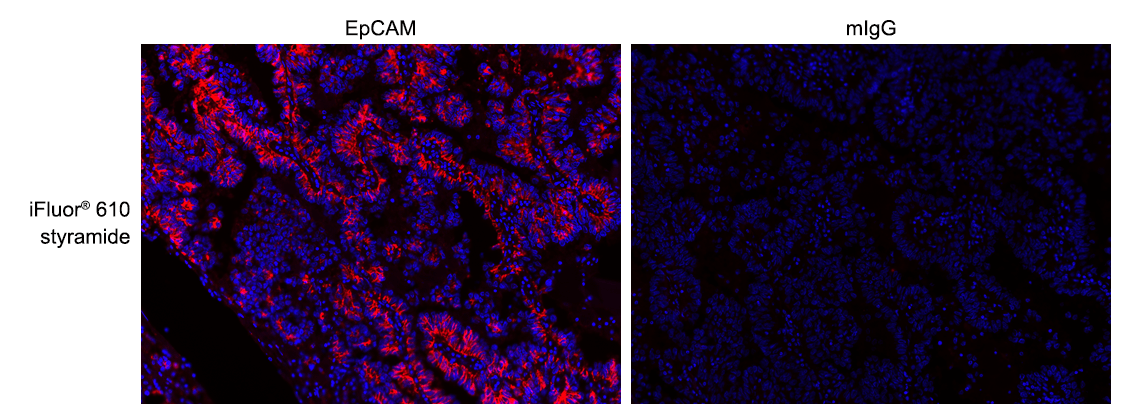iFluor® 610 Styramide
In combination with our superior iFluor® dyes that have higher florescence intensity, increased photostability and enhanced water solubility, the iFluor® dye-labeled Styramide™ conjugates can generate fluorescence signal with significantly higher precision and sensitivity (more than 100 times) than standard ICC/IF/IHC. PSA™ utilizes the catalytic activity of horseradish peroxidase (HRP) for covalent deposition of fluorophores in situ. PSA™ radicals have much higher reactivity than tyramide radicals, making the PSA™ system much faster, more robust and sensitive than the traditional TSA reagents. iFluor® 610 Styramide is a new unique red fluorescent PSA™ reagent for multicolor application with our existing PSA™ and TSA reagents. AAT Bioquest offers the largest collection of TSA regents. We are the exclusive source of the superior PSA™ reagents for multicolor applications.


| Catalog | Size | Price | Quantity |
|---|---|---|---|
| 44904 | 100 Slides | Price |
Physical properties
| Molecular weight | 1321.64 |
| Solvent | DMSO |
Spectral properties
| Correction factor (260 nm) | 0.32 |
| Correction factor (280 nm) | 0.49 |
| Extinction coefficient (cm -1 M -1) | 110000 1 |
| Excitation (nm) | 610 |
| Emission (nm) | 628 |
| Quantum yield | 0.85 1 |
Storage, safety and handling
| H-phrase | H303, H313, H333 |
| Hazard symbol | XN |
| Intended use | Research Use Only (RUO) |
| R-phrase | R20, R21, R22 |
| Storage | Freeze (< -15 °C); Minimize light exposure |
| UNSPSC | 12171501 |
Instrument settings
| Fluorescence microscope | |
| Excitation | Cy3/TRITC filter set |
| Emission | Cy3/TRITC filter set |
| Recommended plate | Black wall/clear bottom |
Documents
Contact us
| Telephone | |
| Fax | |
| sales@aatbio.com | |
| International | See distributors |
| Bulk request | Inquire |
| Custom size | Inquire |
| Technical Support | Contact us |
| Request quotation | Request |
| Purchase order | Send to sales@aatbio.com |
| Shipping | Standard overnight for United States, inquire for international |
Page updated on January 5, 2026

